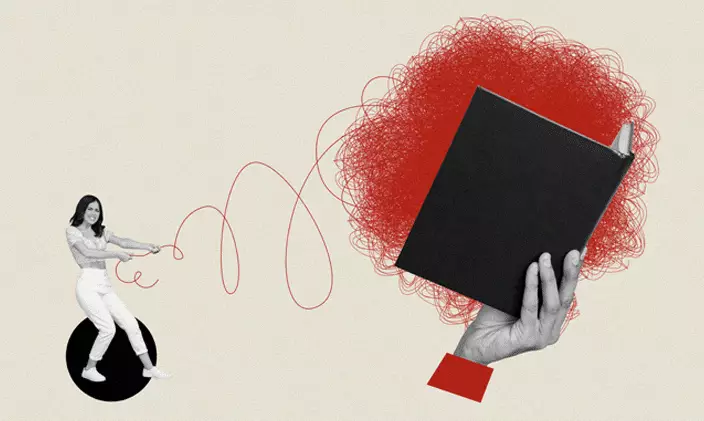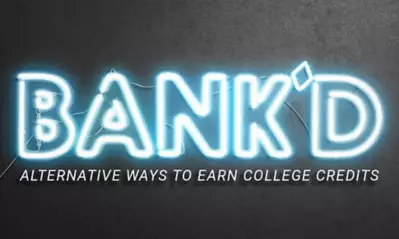Articles > Admissions > 5 Alternative ways to get college credits
5 Alternative ways to get college credits

Written by Laurie Davies

Reviewed by Bronson Ledbetter, MBA, Vice President, Student Services and Financial Operations

At a glance
- Alternative credits are popular options to earn credits without attending a class.
- Transfer credits give you credit for course you've completed elsewhere and can help save time and money toward a degree.
- Work and life experience, like on-the-job training and even raising a child, can sometimes be applied toward college credits.
It's no secret that higher education is an investment of time and money. Fortunately, there are alternative ways to earn college credits in the form of alternative and transfer credits, prior learning assessment and competency-based education.
These options often build on what you already know to ensure that you have a well-rounded education by the time you graduate. And while these terms may sound like a foreign language, they’re key players that can help save you time and money during your academic journey.
Read on to find out what kind of previous educational experiences – and even life experiences – can be applied toward a degree to help fast-track your education.
Alternative credits
Alternative credits allow students to earn college credit without having to sit in a traditional classroom. The best part? Students can apply alternative credits to their degree program in a variety of ways. And as with PLA, it's best to start the process of earning alternative credits at the beginning of your program.
Devin Andrews, vice president of admissions and evaluation at University of Phoenix, says a popular approach is standardized testing. This is done through national testing programs such as CLEP, DSST and AP, which students can prepare for and take to demonstrate their skills of specific subjects and earn alternative credit.
Additionally, alternative credit providers, such as Study.com , have become popular as well, according to Andrews. These providers offer short, self-paced curriculum with built-in assessments, often through a subscription model. Instead of testing, students can complete multiple courses to earn alternative credits.
Transfer credits
"Adult learners with a high number of credits on their transcript may be closer to meeting degree requirements than they think," says U.S. News & World Report. Check with your school to see how many more courses you actually need. Transfer credits are the course credit you’ve earned at another qualified institution of higher learning. This is most commonly done after a student takes courses at a two-year community college and enrolls in a four-year university. If accepted, a student might be able to apply already-earned credits to their degree by transferring them from one institution to another.
After receiving a student's academic transcript and request to transfer their credits, an institution determines how to best apply those credits based on its academic policies. These agreements can help students transition from an associate degree to a bachelor’s degree, for instance.
According to Andrews, some of the most common credits students apply tend to be general education.
"It is most common for students to transfer general education coursework in social sciences, science and technology. English composition and communication arts are common too," she said. "This makes sense. Courses in these areas tend to be common within the first year or two of programs at community colleges and universities."
Credit for work and life experience
You may be wondering if your work and life experience can also count toward college credit. The short answer is yes.
For instance, at University of Phoenix (UOPX) students can participate in Prior Learning Assessment
(PLA) to find out if the learning they've gained from work and life can be applied as college credits toward their degree program. These experiences may include previous professional certificates, on-the-job training and even raising a child.
Andrews says, “PLA is a risk-free process for students, as UOPX does not charge any fees to have prior learning evaluated.” She continues, “We believe in removing barriers for our students and giving them the credit they deserve.”
PLA can involve journaling about your experience, which some people may find intimidating. But the payoff can make it worth it. On average, 55% of UOPX students who took advantage of the program were awarded credits. Plus, for every 3 credits you earn through PLA you can save almost $1,200 and graduate 5 weeks faster!
However, Andrews reminds students that not every institution offers PLA as a way to earn college credits. And when they do, there's often a fee attached. She adds, “If a student has a lot of work or life experience, they should consider whether PLA is available and how much it will cost when enrolling in an institution.”
If you do choose to apply for PLA, do it at the beginning of your college journey. That way, you can potentially bypass some of the general education courses you need to graduate.
How transferring credits work
Not all coursework in which you received a passing grade can count toward every university or every university’s degree program. Before going through the process, you should look closely at your new school’s current transfer policies (these can include application requirements) as well as which courses your new school offers. It’s worth making sure that your past coursework and your current educational goals align.
Once you’ve determined that your current educational institution might accept credits for your previous coursework, you’ll want to contact the school. Inform the admissions office of your situation. Ask them for help to determine which, if any, previous credits can apply toward your degree program.
Afterward, you may need to request transcripts from any and all previous institutions of higher learning that you’ve attended. Keep in touch with your current or future school during the process. They will make sure the transfer of past coursework for credit is proceeding smoothly.
Ultimately, the final word on whether your credits can be applied toward your degree goes to your institution.
The school will determine if credit can be awarded by evaluating the provided documentation and other related sources. It might also base its decision on recommendations from The American Council for Education (ACE) and/or the National College Credit Recommendation Service (NCCRS).
Keep in mind that your institution could have a limit to the number of credits that can be transferred.
Will my college credits transfer?
If you’ve earned college credits, chances are you are eligible to apply them toward a degree program. At University of Phoenix, we work with a number of accredited colleges and universities to establish hundreds of transfer agreements toward our bachelor’s degrees . To discover how many of your credits can be applied at the University, explore our transfer guide
to find out what is available to you.
Our Prior Learning Assessment can help you get credit for what you know by turning on-the-job training, industry certifications, military service and life experience into potential credits. So, what are you waiting for? Make earning a college degree more affordable by getting creative with how you combine alternative ways to earn college credits.
Ready to find ways you can earn college credits?
At University of Phoenix, students can apply up to 75% of their credits to an undergraduate program, which includes any combination of PLA, alternative credits and transfer credits. Find out more:
- Explore self-paced online alternative course providers
to see how to earn transfer-eligible credits. If you’ve earned college credits, chances are you are eligible to apply them toward a degree program.
- Check out University of Phoenix transfer guide
for more details about transferring credits.
- Read more about how you might get credit for life and work experience with our Prior Learning Assessment
.

ABOUT THE AUTHOR
A journalist-turned-marketer, Laurie Davies has been writing since her high school advanced composition teacher told her she broke too many rules. She has worked with University of Phoenix since 2017, and currently splits her time between blogging and serving as lead writer on the University’s Academic Annual Report. Previously, she has written marketing content for MADD, Kaiser Permanente, Massage Envy, UPS, and other national brands. She lives in the Phoenix area with her husband and son, who is the best story she’s ever written.
This article has been vetted by University of Phoenix's editorial advisory committee.
Read more about our editorial process.


